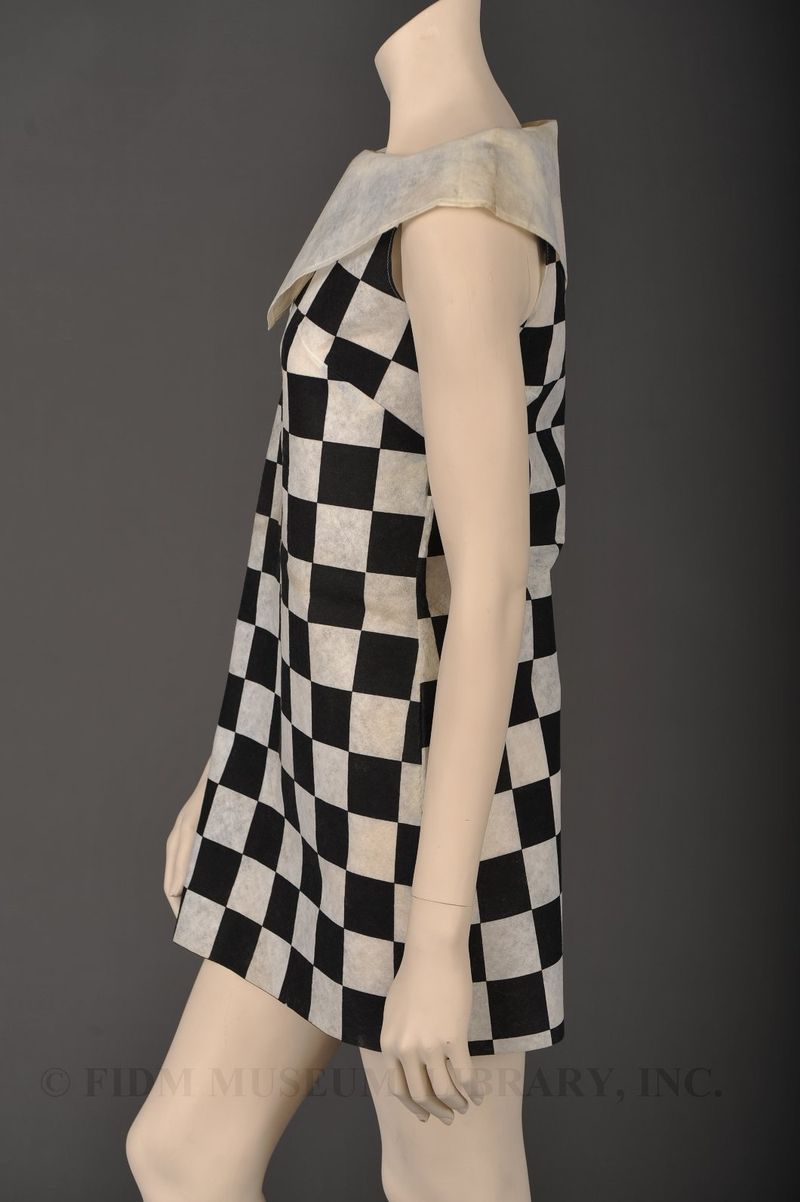Would you believe it's paper?
As many of our readers may already know, season 6 of Project Runway was filmed at FIDM! In the most recent episode (season 6, episode 5), the contestants used pages from the Los Angeles Times to create "ripped from the headlines" garments. You can check out their creations here. As mentioned in the episode by Tim Gunn and Los Angeles Times fashion critic Booth Moore, paper garments have a prominent place in fashion history. In March 1966, Scott Paper Company (now Kimberly-Clark) introduced a disposable paper dress called the "Paper Caper" as a promotional tool. Available via mail-order for $1.25, the sleeveless, A-line mini dress was available in two patterns: red bandana print or black and white Op-Art print. Though intended as an advertising gimmick, the paper dress somehow captured the feeling of the moment and became an instant success. Numerous designers and manufacturers picked up on the trend and produced all manner of paper garments, including jumpsuits, swimsuits, evening gowns and even underwear through 1968, when the fad lost momentum. Though it seems almost counter-intuitive, the central appeal of the paper dress was its disposability. The paper dress was intended to be worn only a few times and then tossed in the garbage in favor of a new garment. Even if you wanted to wash and re-wear your paper dress, it was not recommended as they tended to disintegrate on contact with water. One advertisement from the Los Angeles Times even proclaimed, "they're guaranteed not to last."1 Made from a fire-retardant, non-woven fiber called Kaycel, the paper dress also tied in with the overall interest in newly developed, man-made materials that was so prominent in early to mid 1960s fashion. Pushing this aesthetic interest even further were paper dresses that incorporated metallic or plastic elements. To some extent, buyers could personalize their paper dresses. With a snip of the scissors, a too long dress could be made shorter, though not longer. Though most paper dresses were printed with very contemporary patterns, some manufacturers sold plain white paper dresses that could be individually decorated. Given the short turnaround in manufacturing time, the paper dress also served as a perfectly blank vehicle for self-promotion or marketing and corporations such as Air India and Time magazine used paper garments as an advertising medium. In November 1966, Andy Warhol decorated a plain paper dress with paper bananas and paint during an event at the Abraham & Straus department store in Brooklyn. Lesser known artists and graphic designers also got into the act, as demonstrated by the "Mystic Eye" paper dress seen below. It was one in a series of 4 "Poster" dresses created by the graphic designer Harry Gordon. The FIDM Museum has a large collection of paper dresses. In addition to the Harry Gordon dress featured below, we've posted two other paper dresses for your viewing pleasure! How do they compare to the dresses created by the Project Runway crew? We'd love to know what you think!
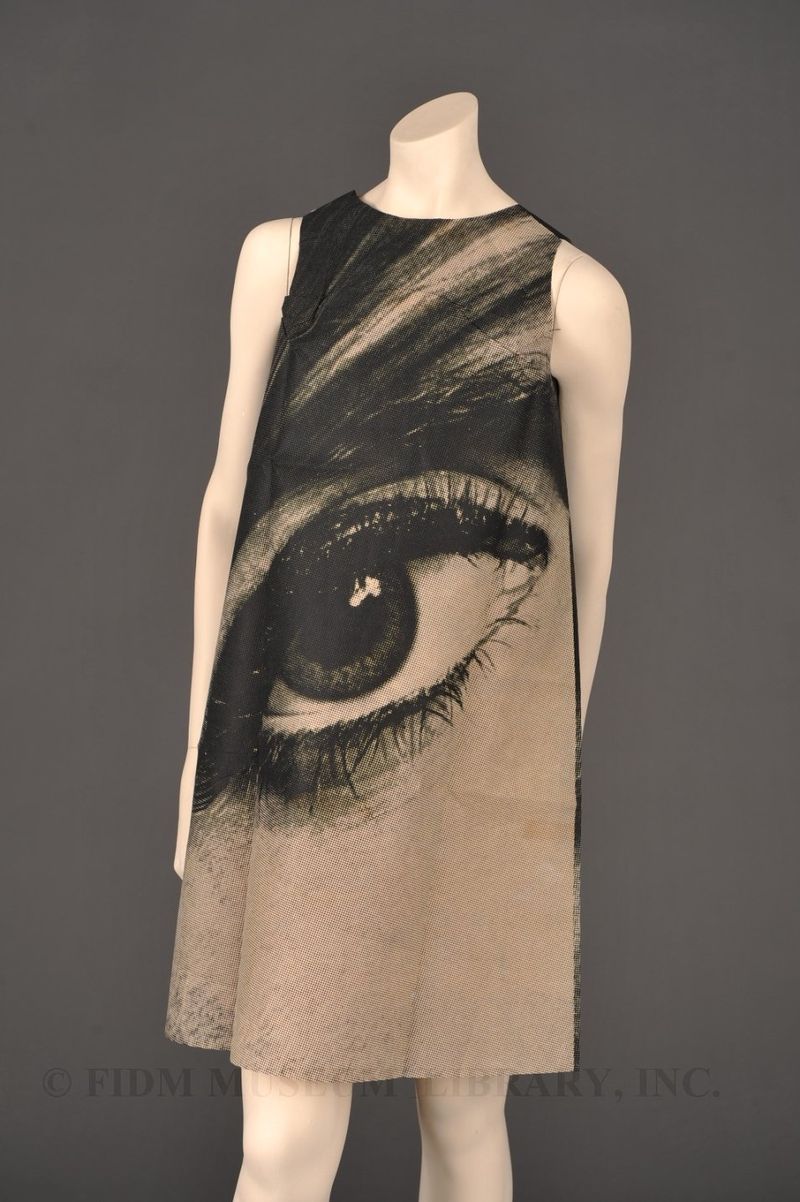 "Mystic eye" paper dress Harry Gordon 1968 Museum Purchase 2004.5.35A
"Mystic eye" paper dress Harry Gordon 1968 Museum Purchase 2004.5.35A
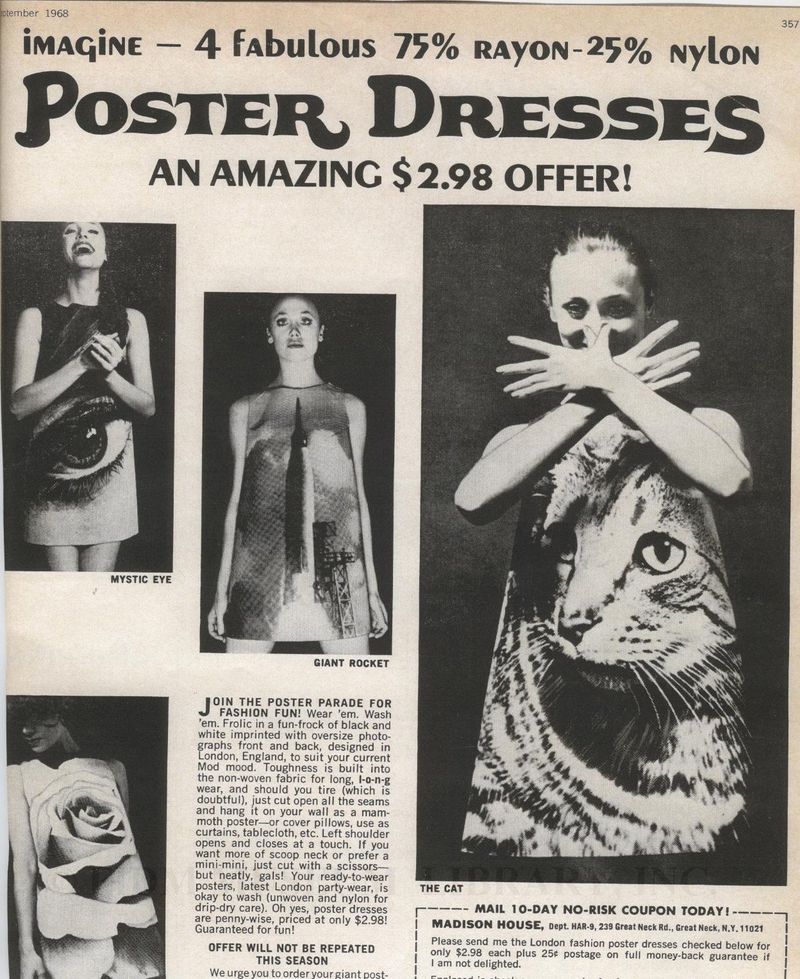 Poster Dress packaging insert 1968 2004.5.35D
Poster Dress packaging insert 1968 2004.5.35D
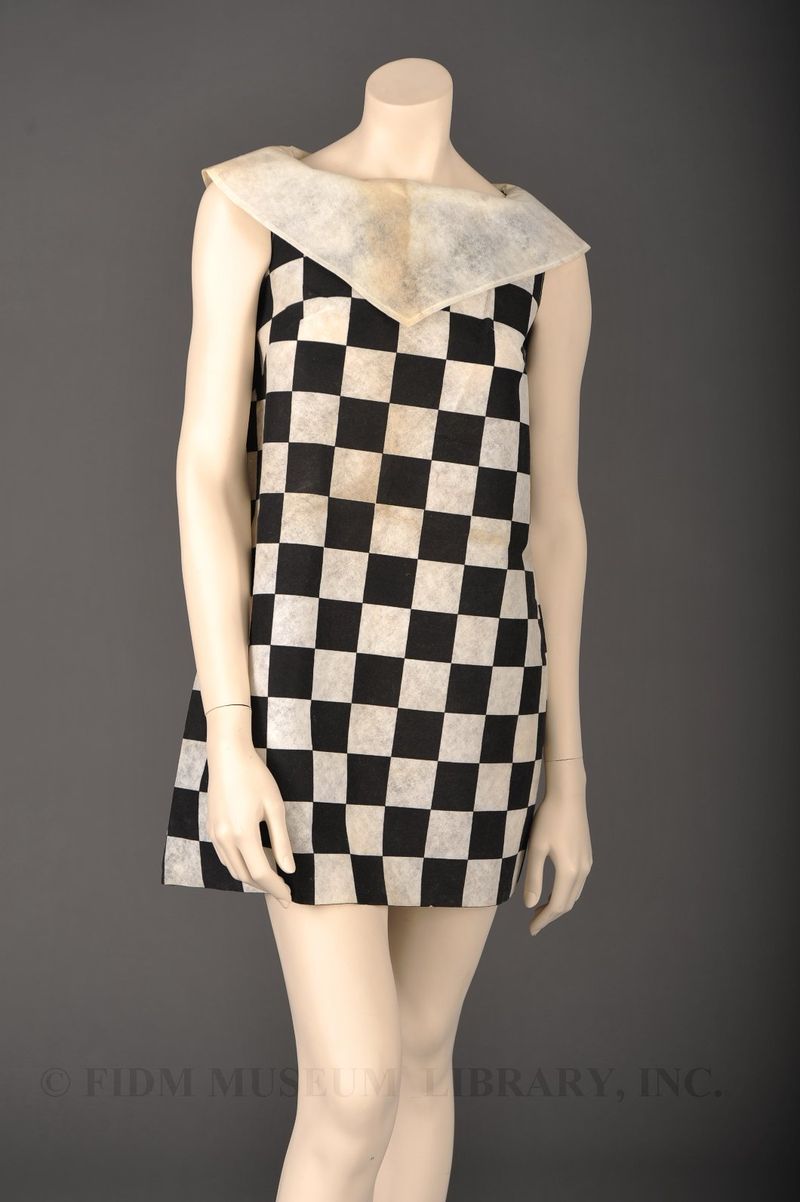 Checkerboard paper dress Styled by Sue c.1967 Gift of Paul Kaufman 2001.404.1
Checkerboard paper dress Styled by Sue c.1967 Gift of Paul Kaufman 2001.404.1
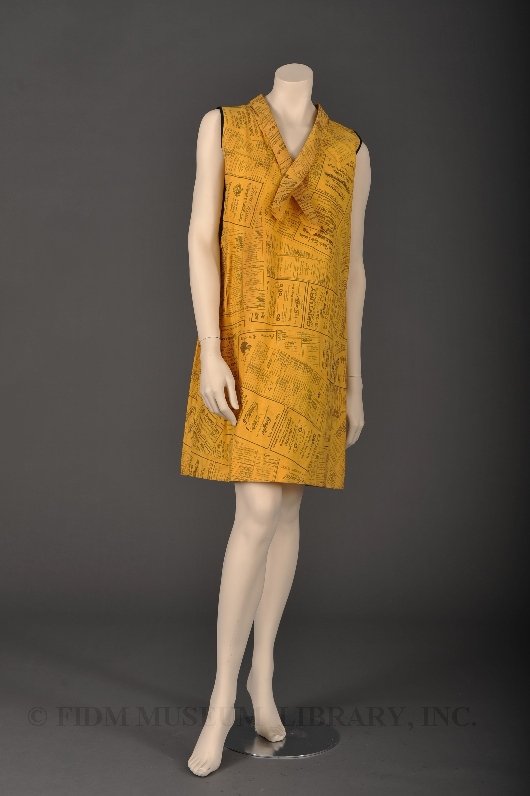
Newsprint paper dress Wastebasket Boutique 1966-1969 Gift of Mr. & Mrs. Alfred Himelson 97.350.1
1 Would you believe Paper? Advertisement. Los Angeles Times 6 Oct. 1966: WS9.
Palmer, Alexandra. "Paper Clothes: Not Just a Fad." Dress and Popular Culture Ed. Patricia A. Cunningham and Susan Voso Lab. Ohio: Popular Press, 1991. 85-105.
